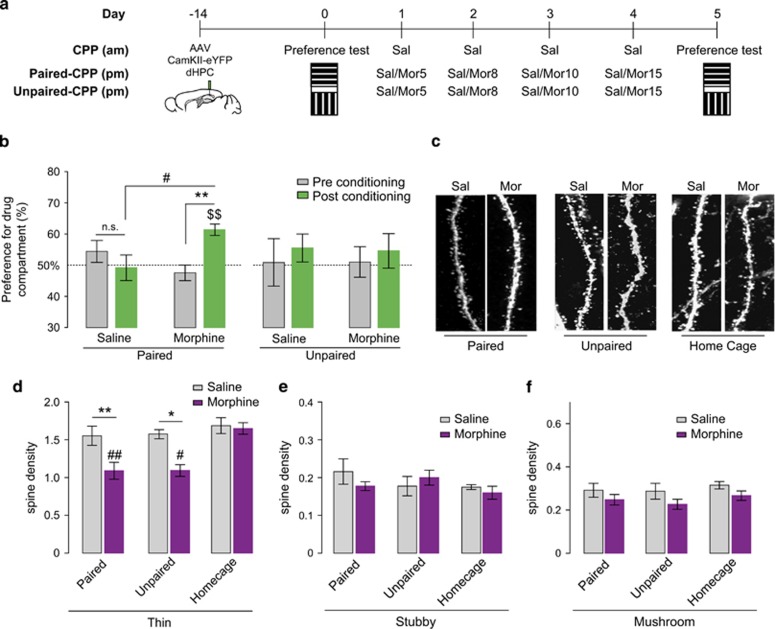Figure 2.
Paired and unpaired morphine CPP decrease the density of thin spines. (a) Schematic representation of the behavioral paradigm used in morphine-paired and -unpaired CPP. (b) Morphine-treated animals develop a preference during post-conditioning test but not saline-treated mice (respectively, paired: n=12 mice and n=13 mice; unpaired: n=7 mice for both groups). Results are represented as percentage of time spent in the morphine-paired compartment during pre- and post-conditioning tests +/− SEM. #p<0.05, **p<0.01, $$p<0.01 (Wilcoxon test compared to 50%). (c) Representative high resolution images of a dendritic segment from morphine- and saline-paired-treated mice in all conditions analyzed. (d–f) Analysis of the different types of spine density in both saline- and morphine-paired (n=6 mice and n=5 mice, respectively), unpaired (n=4 mice and n=4 mice, respectively), and home cage groups (n=4 mice and n=4 mice, respectively). (d) Thin spine density is decreased in morphine-paired and -unpaired mice compared with saline. No difference was observed in home cage saline (n=4 mice)- and morphine (n=4 mice)-treated mice. Results are represented as spine density per micron +/- SEM. *p<0.05, **p<0.01; #p<0.05, and ##p<0.01 compared with morphine home cage. (e and f) Stubby and mushroom densities were not affected by morphine treatment in either paradigm used.

